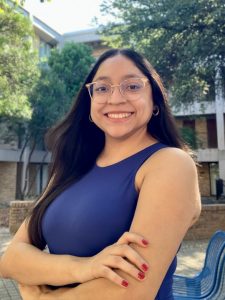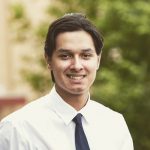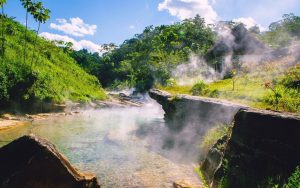Aprender un idioma nuevo puede ser muy difícil. En particular si el idioma no se habló en la casa de una persona durante su niñez. Al aprender un idioma, es esencial que el niño escuche el idioma de sus padres y que lo practique por el habla y la escritura. Esta práctica del idioma es muy importante para que se adquiera completamente. Pero, cuando se habla de los idiomas más allá del primero, la adquisición se vuelve un poco más complicada.
Todas las personas hablan un lenguaje, ya que sea inglés, español, francés, o si usan las manos para la lengua de signos. El idioma que una persona domina es en general el que sus padres le hablan la mayoría del tiempo. Es importante comprender cómo una persona habla su(s) idioma(s) y qué factores afecta su uso del lenguaje.

En los Estados Unidos, una persona de cada cinco habla un lenguaje que no es el inglés.1 La lingüística aplicada se refiere al estudio de los conocimientos de una lengua, cómo se adquieren y de la adquisición de segundas lenguas. 2 El concepto específicamente se enfoca en la adquisición que ocurre en las escuelas y en las clases de lengua. 3 Es importante entender, sin embargo, que una persona puede adquirir un idioma no solo en la escuela, sino también por hablar con su familia o en un ambiente en que un idioma es dominante. Este es el caso en St. Mary’s University. La escuela se identifica como “Hispanic-serving” y muchos de los estudiantes son de los Estados Unidos y aprendieron español en su casa, o vienen de otro país en que el espanol es el idioma dominante. 4 Según US News, St. Mary’s tiene una inscripción de estudiantes minoritarias de 62%, y de estudiantes hispanos de 56%. 5
Este articulo presenta una comparación de dos estudiantes en St. Mary’s y cómo las dos adquirieron y usan sus habilidades en español. La primera mujer se llama Yesenia. Ella adquirió el español como su primer idioma y lo habla mucho, pero también habla inglés. La segunda es Leilani, quien adquirió el idioma español despues de adquirir el inglés. El objeto de este artículo y las entrevistas en que participaron las dos estudiantes es ver, comprar y contrastar las diferencias que muestran las dos al usar el idioma español, de no solo sus comentarios al respecto, sino también el uso cotidiano, con las diferentes personas en sus vidas. Se van a comparar y contrastar en particular los rasgos léxicos (las palabras), los pragmáticos (las normas de las interacciones) e los interactivos (con quiénes hablan) de las dos mujeres.

Yesenia De Leon se especializa en las comunicaciones en la universidad, y tiene un minor en marketing. Es una junior y es de Houston, Texas, pero se transfirió a St. Mary’s University de Boston College. En la universidad, es la editora de opiniones en The Rattler, el periódico estudiantil, y es una participante en el ministerio religioso de la universidad. Yesenia dice que habló español primero en su vida. Ya que sus padres hablan solo español este fue el único idioma que le enseñaron a ella. Dice, “I started going to school when I was three and I was in bilingual classes so I’d learn stuff in both languages and interact in English too. I did that until about the fourth grade when they didn’t have a teacher for the bilingual class anymore so we shifted to English completely.” Con respecto a su uso de lenguas en la vida actual, dice, “I’d say I use my Spanish language when I call my parents to tell them about how school is going. Usually it’s when I get back to my dorm. I also use Spanish when talking to my friends who speak Spanish over lunch or dinner. And, sometimes on Sundays when I go to the Spanish mass, I get to pray in Spanish.”
Leilani Gonzalez es una senior en la universidad y se gradúa en mayo de este año. Es de Brownsville, Texas, y se especializa en la biología. Es muy activa en St. Mary’s, como miembro del coro de la iglesia, las Catholic Daughters of the Americas, la Catholic Student Organization, el club de K-Pop, el club de Anime y Rattler Awakening, un grupo religioso. Con respecto a su adquisición de lenguas, dice, “My first word that I spoke was ‘agua’ which is water in Spanish, but the language I learned to speak fluently first was English. It is the main language that my parents would speak at home, and I would learn it from them. I learned Spanish mainly from my grandma and my friends in school since they mainly spoke in Spanish. I was able to understand Spanish very well, but I would always get too shy or embarrassed to speak it since the conjugation is different.”

Yesenia y Leilani participaron por separado en entrevistas con el investigador. Las preguntas fueron las mismas en los dos entrevistas, y los dos se llevaron a cabo en inglés. El objetivo de las entrevistas fue que las mujeres hablaran sobre sus experiencias con la lengua española. Las preguntas se hicieron en el estilo de las noticias, para que Leilani y Yesenia pudieran describir sus experiencias con mucho detalle. Abajo están las preguntas, y las respuestas de las dos.
Antes de presentar las respuestas, es importante reconocer que estas dos mujeres se consideran hablantes de herencia del español. El Center for Applied Linguistics en Washington, DC, describe a un hablante de herencia como alguien “who has proficiency in or a cultural connection to (a) language.” 6 Ya que el español en parte de su familia y su comunidad, Yesenia y Leilani son hablantes de herencia.
¿Cuál es tu historia?
Yesenia: “I grew up, like, speaking both from a very young age. I started school when I was three. So I was enrolled in mostly Spanish-speaking classes for like Pre-K through the fourth grade. But I have three older sisters who all speak English. So, at that point, I mean, it was becoming a staple in our home. And, so, like, my parents didn’t speak English. (My parents) did, and that’s who I could learn from. My parents don’t speak English. Well, they do now, but it’s, you know, not like the best. So I mean, to understand them and for us to communicate well, it made sense for all of us to learn both languages.”
Leilani: “I grew up in Brownsville, Texas, which is in the Valley and it’s the most south part of Texas. It is right before the border where you cross to go to Matamoros. So the culture there is very heavily Hispanic based. We do have a lot of Hispanic traditions and we do a lot of things at the border as well. Celebrations. And I grew up speaking English first. However, my first words were in Spanish, but I grew up speaking English because it was the faster language for me to pick up due to watching TV shows and movies and the media, I guess, that I was consuming as a child.”
¿Tú conversas con tus hermanos en español más que inglés, o en inglés más que español?
Yesenia: “I’d say it was kind of a mix. My family and I have always had dinner together. So, during dinner, we go around talking about our day, and that’s always been something that we do in Spanish … (we share) our day in the Spanish language. And I think now more that we’re not living at home, I talk to my sisters more in English just because, it just makes more sense. But since they kind of stopped speaking Spanish, it makes more sense. But we can all still understand. We can all still speak it.”
Leilani: “My grandma would speak only in Spanish to me … Occasionally she would speak in English, but she only spoke in Spanish. And I was able to understand Spanish, I just wasn’t able to speak it properly because the conjugation with Spanish, it’s very interesting, but I just couldn’t figure out how to understand it. And I would always get embarrassed when trying to speak it, especially with my cousins from my dad’s side of the family, who mostly spoke in Spanish, while I mainly spoke in English.”
¿En qué aspecto del español estás más débil – hablar, escribir o leer?
Yesenia: “Writing in Spanish. I’m very good at understanding what people are saying. I’m very good at speaking Spanish, but I can write in Spanish. It’s just not going to be, like, perfectly spelled … And that’s due to, again, I went to a high school where they had two IB Spanish classes, and I took both of them. It was, like, one I took online, and then the other one got cut short because of COVID … (My teacher) could understand what I wrote and it made sense to her.”
Leilani: “I feel like just trying to form sentences properly. My Spanish kind of sounded very broken, and I couldn’t really form sentences correctly. Writing it is also difficult. I didn’t learn how to write in Spanish until I was in high school. I grew more comfortable with speaking Spanish when taking courses in high school, especially with my AP Spanish teacher. She would encourage me to get rid of that embarrassment by, like, helping me. And I would go to her class every single day after school in order to practice Spanish with her.”
¿Tienes amigos aquí en St. Mary’s o amigos en tu ciudad con quienes te sientes cómoda hablando en español?
Yesenia: “I have some friends that I made freshman year. And although now, like, she stayed in Boston and I came back to Texas, we still call every once in a while and we have our two-, three-hour-long conversations in Spanish. I know her family is from, if I am not mistaken, Puebla (where) my parents are from. So I know there’s a few things that we say differently, but we’ve never had trouble understanding each other.”
Leilani: “Yes. At school, growing up, I did have. Since we were from, like, by the border, I did have a lot of friends that grew up speaking Spanish, so I would practice my Spanish with them. And here at the university, we have a heavy Hispanic population, So I do speak in Spanish with a couple of people here, especially with my friends from Peru.”
¿Es muy difícil hablar una de tus lenguas porque hablas dos?
La razón por esta pregunta tiene que ver con la complejidad de los hablantes de herencia. Los niños en particular pueden adquirir varias lenguas pero es posible que después pierdan una de estas lenguas. 7 Pero, las investigaciones muestran evidencia que algunas huellas siguen existiendo de los idiomas que están perdidos y que es posible que una persona pueda aprenderlo otra vez y resucitar sus habilidades. 8 Es posible que las dos, Leilani y Yesenia, por vivir en San Antonio en la universidad y estar fuera de sus casas, se olviden del espanol porque el inglés es el idioma dominante en el campus.
Yesenia: “I don’t think so, because, I mean, whenever I go back home, I usually have a job where I am speaking English and then I speak Spanish at home. I also call my parents pretty often whenever I’m here. And I get to speak with them in Spanish. And I think that also helps for me to practice and make sure that, you know, I’m not forgetting my language and, you know, occasionally watching a show or two in Spanish just to keep that up and not necessarily just be watching, like, English shows.”
Leilani: “Yes, there are some times where I would be speaking Spanish and like, I forget certain words here and there, or like, my mind just completely blank. Same thing can go with me speaking English. I can know, like, how to explain it in Spanish, but I won’t know how to explain it in English.”
¿Cuáles son las normas pragmáticas en tu casa? Cuando estás con tus hermanas o amigos, ¿hablas diferente de cuando hablas con tus padres? (e.g., ¿Usas tú o usted con tus padres y con tus amigos?)
Yesenia: “I think so. It also depends on, like, my relationship with that person. I respect my parents a lot, and I know that there’s definitely ways that I would never want to disrespect them in the way that I am speaking. So there are times whenever, you know, I hold my tongue and I don’t say necessarily everything that’s on my mind because they are my parents. Whereas with my friends, sometimes I will throw in a joke or two and be a bit more carefree with what I am saying.”
Leilani: “I mainly speak it informally unless I’m introducing myself to someone who’s in a higher position than me or someone who is older than me, because I want to respect them and their authorities. But I mainly speak it informally with my family and with my friends.”
¿Tú usas “Spanglish” o tomas prestadas palabras del inglés cuando hablas en español?
Yesenia: “Yeah. I think to mix the two is pretty fun, especially when I can’t remember what another word is in Spanish or when it’s in English. So if I am speaking English and there’s one word that I need to use to describe … anything, then I’ll just throw it in there. But, I mean, in regards to code-switching, I definitely think that there are some times whenever, you know, it is necessary. I think in more professional settings, I know, like, I can’t be super excited about all the things that I want to be excited about because it’s just not.”
Leilani: “I find myself doing that quite often. I think it’s something that I just picked up from other people as well. Or, like, we’ll just constantly be switching back and forth between the languages or speaking in Spanglish.”
Las respuestas de Leilani y Yesenia incluyen mucha información que se alinea con las investigaciones sobre los hablantes de herencia. Los hablantes de herencia a veces creen que sus habilidades en un idioma no son buenas. 9 Leilani en su entrevista dice que estaba “embarrassed” de sus habilidades al hablar en español. Eso es muy normal para muchos hablantes de herencias que no tienen tanta práctica hablando en español. 10 Esto explica también la razón que Yesenia no mencionó tener experiencias de estar avergonzada de su español, porque ella sí ha tenido mucha práctica en su familia.
La educación que recibieron estas dos mujeres fue importante para su aprendizaje del español. En las respuestas, las dos mencionaron sus inseguridades para escribir y hablar en español, pero que sus maestras las ayudaron. Tal vez estas respuestas tienen que ver con el tipo de enseñanza que recibieron y el método pedagógico que se usó. El Método Gramática-Traducción, por ejemplo, se enfoca en la gramática y la escritura, mientras que el Método Directo se enfoca solo en que los estudiantes puedan escuchar y hablar. 11 Es posible que Leilani no recibiera mucha práctica para hablar hasta su clase de AP, que podría ayudar a mejorar sus habilidades ahora. Es también muy interesante que tanto Leilani como Yesenia dijeran que la escritura es su habilidad más débil. La escritura es un elemento muy difícil para muchos hablantes de herencia y es importante que las clases los ayuden a desarrollar específicamente esta habilidad. 12
La familia y las comunidades son muy importantes para los hablantes de herencia; según el Center for Applied Linguistics, en los Estados Unidos, una lengua herencia es definida como un idioma que no es inglés que es hablado por un individuo, su familia o su comunidad. 13 Las dos, Yesenia y Leilani, tienen familia aquí en los Estados Unidos, específicamente Texas, que hablan el español de México. La única diferencia fue que los padres de Yesenia siempre les han hablado español a sus hermanas y a ella, mientras que la abuela de Leilani habla con ella en español solo un poco. Las dos también tienen amigos con quienes conversan en español y esto es muy importante. Los amigos son una parte de la comunidad de los hablantes de herencia y pueden ayudar a reforzar el idioma.
Así que es evidente que las familias son los factores más influyentes en la adquisición de español de Leilani y Yesenia durante su niñez. Las dos tienen familia y orígenes en México, pero en el caso de Leilani, por la poca exposición que tuvo al español, ella estaba muy avergonzada y creía que su español no fue bueno. Sin embargo, Leilani tuvo un ventaja porque es de Brownsville, cerca a la frontera con México, rodeada por una comunidad de hispanohablantes. Pero con Yesenia, sus padres no hablaron inglés durante la niñez de ella, así que su adquisición de español ocurrió a través de su mamá y papá, una fuente muy importante de input del lenguaje. Adicionalmente, Yesenia ha tenido más oportunidades para hablar en español con sus hermanas, aunque ahora con un poco de inglés también.
Yesenia y Leilani son dos ejemplos de personas bilingües en español e inglés. Pero, sus historias de la adquisición y el uso de las dos lenguas son muy diferentes, recordándonos que cada individuo bilingüe, su historia y sus habilidades lingüísticas son únicos.
- Deanda, S., Arias-Trejo, N., Poulin-Doubois, D., Zesiger, P., & Friend, M. (2016). Minimal second language exposure, SES, and early word comprehension: New evidence from a direct assessment. Bilingualism: Language and Cognition, 19(1), 162-180. ↵
- Koike, D. A., & Klee, C. (2013). Lingüística aplicada: Adquisición del español como segunda lengua. Wiley. ↵
- Koike, D. A., & Klee, C. (2013). Lingüística aplicada: Adquisición del español como segunda lengua. Wiley. ↵
- St. Mary’s University (2025). Hispanic-serving institution. www.stmarytx.edu/about/hsi/ ↵
- US News. (2025). St. Mary’s University of San Antonio. www.usnews.com/best-colleges/st-marys-university-san-antonio-3623 ↵
- Kelleher, A. (2010). Who is a heritage language learner? Heritage Briefs. www.cal.org/heritage/pdfs/Who-is-a-Heritage-Language-Learner.pdf ↵
- Montrul, S. (2023). Heritage languages: Language acquired, language lost, language regained. Annual Review of Linguistics, 9, 399-418. https://doi.org/10.1146/annurev-linguistics-030521-050236 ↵
- Montrul, S. (2023). Heritage languages: Language acquired, language lost, language regained. Annual Review of Linguistics, 9, 399-418. https://doi.org/10.1146/annurev-linguistics-030521-050236 ↵
- Villa, D. J. (2004). Heritage language speakers and upper-division language instruction: Findings from a Spanish linguistics program. In H. Byrnes & H. H. Maxim (Eds.), Advanced foreign language learning: A challenge to college programs (pp. 88-98). Heinle. www.academia.edu/359583/Heritage_Language_Speakers_and_Upper_Division_Language_Instruction_Findings_from_a_Spanish_Linguistics_Program#loswp-work-container ↵
- Villa, D. J. (2004). Heritage language speakers and upper-division language instruction: Findings from a Spanish linguistics program. In H. Byrnes & H. H. Maxim (Eds.), Advanced foreign language learning: A challenge to college programs (pp. 88-98). Heinle. www.academia.edu/359583/Heritage_Language_Speakers_and_Upper_Division_Language_Instruction_Findings_from_a_Spanish_Linguistics_Program#loswp-work-container ↵
- Koike, D. A., & Klee, C. (2013). Lingüística aplicada: Adquisición del español como segunda lengua. Wiley. ↵
- Koike, D. A., & Klee, C. (2013). Lingüística aplicada: Adquisición del español como segunda lengua. Wiley. ↵
- Heritage Languages in America. (n.d.). Heritage faqs. Center for Applied Linguistics. www.cal.org/heritage/research/faqs.html#1 ↵



